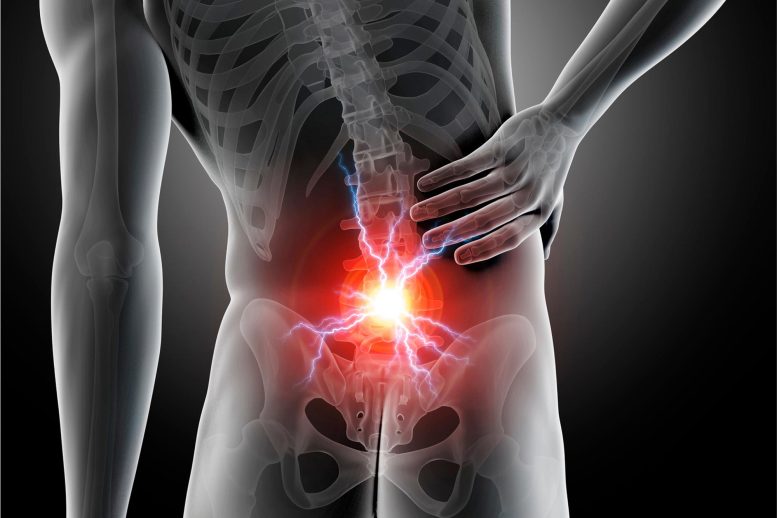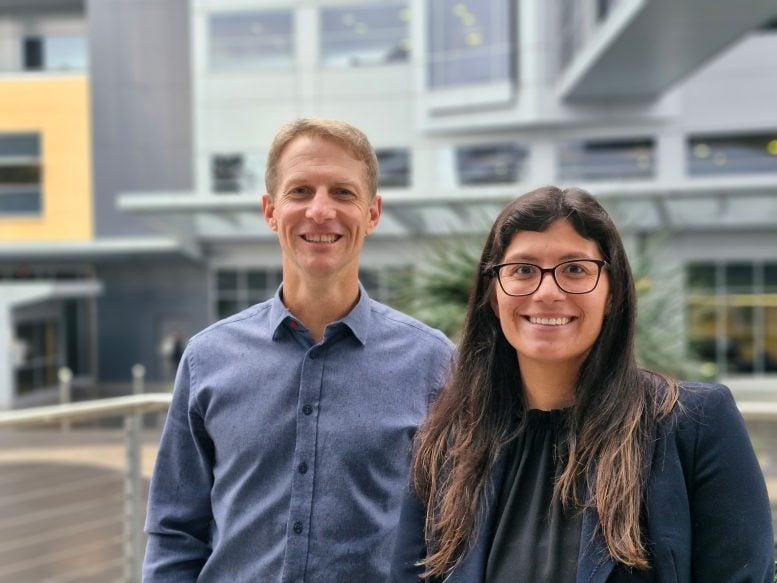
New research has revealed that regular walking significantly extended pain-free periods for adults with low back pain, proving its effectiveness and affordability as a preventive measure.
A groundbreaking study has found that adults with a history of low back pain experienced nearly twice the duration without a recurrence when they walked regularly. Low back pain affects approximately 800 million people globally and is a leading cause of disability and reduced quality of life.
Repeated episodes of low back pain are also very common, with seven in 10 people who recover from an episode going on to have a recurrence within a year. Current best practice for back pain management and prevention suggests a combination of exercise and education. However, some forms of exercise are not accessible or affordable to many people due to their high cost, complexity, and need for supervision.
Macquarie University’s Clinical Trial
A clinical trial by Macquarie University’s Spinal Pain Research Group has looked at whether walking could be an effective, cost-effective, and accessible intervention.
The trial followed 701 adults who had recently recovered from an episode of low back pain, randomly allocating participants to either an individualized walking program and six physiotherapist-guided education sessions over six months, or to a control group. Researchers followed the participants for between one and three years, depending on when they joined, and the results have now been published in the latest edition of The Lancet.

The paper’s senior author, Macquarie University Professor of Physiotherapy, Mark Hancock, says the findings could have a profound impact on how low back pain is managed.
“The intervention group had fewer occurrences of activity limiting pain compared to the control group, and a longer average period before they had a recurrence, with a median of 208 days compared to 112 days,” Professor Hancock says. “Walking is a low-cost, widely accessible, and simple exercise that almost anyone can engage in, regardless of geographic location, age or socio-economic status. We don’t know exactly why walking is so good for preventing back pain, but it is likely to include the combination of the gentle oscillatory movements, loading and strengthening the spinal structures and muscles, relaxation and stress relief, and release of ‘feel-good’ endorphins. And of course, we also know that walking comes with many other health benefits, including cardiovascular health, bone density, healthy weight, and improved mental health.”
Cost-Effectiveness and Accessibility of Walking
Lead author Dr Natasha Pocovi says in addition to providing participants with longer pain-free periods, the program was very cost-effective.
“It not only improved people’s quality of life, but it reduced their need both to seek healthcare support and the amount of time taken off work by approximately half,” she says. “The exercise-based interventions to prevent back pain that have been explored previously are typically group-based and need close clinical supervision and expensive equipment, so they are much less accessible to the majority of patients. Our study has shown that this effective and accessible means of exercise has the potential to be successfully implemented at a much larger scale than other forms of exercise.”
To build on these findings, the team now hopes to explore how they can integrate the preventive approach into the routine care of patients who experience recurrent low back pain.
Reference: “Effectiveness and cost-effectiveness of an individualised, progressive walking and education intervention for the prevention of low back pain recurrence in Australia (WalkBack): a randomised controlled trial” by Natasha C Pocovi, Chung-Wei Christine Lin, Simon D French, Petra L Graham, Johanna M van Dongen, Jane Latimer, Dafna Merom, Anne Tiedemann, Christopher G Maher, Ornella Clavisi, Shuk Yin Kate Tong and Mark J Hancock, 19 June 2024, The Lancet.
DOI: 10.1016/S0140-6736(24)00755-4
The study was funded by the National Health and Medical Research Council.
Never miss a breakthrough: Join the SciTechDaily newsletter.
8 Comments
Sure, walking and exercise are great. But while waiting for that to work, go get an epidural (cortisone) shot. Works wonders, typically removes pain for up to 6 months.
Find a pain management MD for the shot. Stay away for hospitals, which make a big deal of this simple shot.
I have pain down my leg from walking on hard surfaces like sidewalks, asphalt and tile. We have wooden floors in our house which have some give when I walk so I don’t have as much pain. I have been getting cortisone shots for years. Have surgery tomorrow, then maybe i can walk without pain.
What kind of surgery are you getting? I hope it isn’t a fusion!
Walking backwards might even be more effective.
Forward reduces pain, backward increases pain.
Anyone try TENS machine for back pain? Wondering if it really works before I purchase one
TENS machine helps for temporary relief. After a while, the electrical signal itself becomes irritating.
Around half of all chronic lower back pain is caused by an infection in the disks. It takes a long course of antibiotics to kill it. If you just get the usual 10-day treatment, it will be back.
Chronic lower back pain can also be caused by feelings of unfairness. Of course, just having a lot of belly can cause problems. I did sit-ups every morning on the edge of my bed. 120 seemed to do the job. They are easier just sitting on the edge of the bed, though I started with just 20 and built up. Stomach muscles respond quickly. It only took a week to get to 120. Eventually, I lost 60 lb (not from doing sit-ups, portion control, no dinner, walking…eventually replaced with hiking) and don’t need the sit-ups anymore. I used to have a lot of other joint pain as well. I tried many different supplements. The ones that worked were: glycine, trimethylglycine (not usually taken for joint pain but worked for me), and collagen peptides. I am pain free. I can bend to the ground first thing in the morning. Nothing. Never thought it would be completely gone. I can even do DIY stuff on the floor for hours and get up with no pain. That pain started in my early 30s. How did that go away? Not complaining.